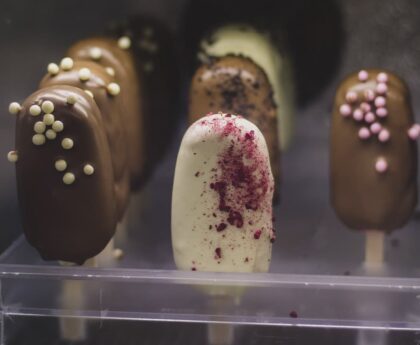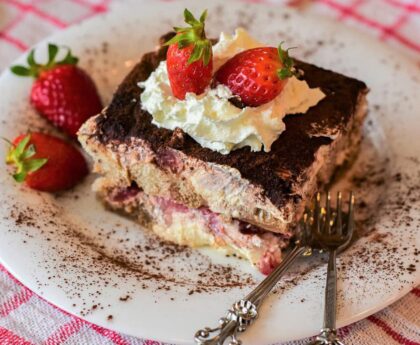Lemon curd is probably the most popular fruit cream in the pastry world. And no wonder, because it’s brilliant: bright, juicy, smooth as silk, and moderately sweet.
The classic recipe for lemon curd
The classic recipe differs between French and American pastry chefs. At least in the sources I’ve come across.
The French one is made without butter. It is added when the curd cools to 45 degrees and then whipped with a blender.
In the American version, the butter is immediately mixed and heated with the rest of the ingredients.
I’ve tried different ways and found no argument against the second option, while it’s obviously easier, so I make it this way.
How do I add zest to lemon cream?
I’ve come across 3 ways.
- It used to always be written that you had to grind it with sugar for maximum flavor.
- Then I saw an idea from professional pastry chefs to put the zest in a sieve through which the custard will be rubbed. In that case, the zest is usually removed in fairly wide strips.
- I have the most handy and very durable Microplane citrus and spice grater. It makes thin, flavorful strands, and I put them in the cream instead of all the ingredients.
If you make baked goods and desserts very often, look for frozen zest, it will help save time. But I do not recommend dry in bags, fresh is tastier.
How to use lemon curd?
It’s great on its own or as part of a variety of desserts.
You can
- Serve it on toast, croutons, scones, croissants, pancakes, and even pancakes,
- make lemon custard for cake (remember the perfect lemon cake on the blog?),
- add to Pavlov’s cake to compensate for the excessive sweetness of the meringue,
- use as a filling for cupcakes,
- make a cookie sandwich (kind of like a lincer),
- make a French lemon tart or an American lemon tart with meringue (you know how they differ?).
Lemon Curd.
Ingredients
93 grams of egg yolks
150 g sugar
57g dice butter
93g fresh lemon juice
2 tsp lemon zest
1 g salt
Instructions
- Mix the yolks, sugar and butter in a heavy-bottomed saucepan. Add the lemon juice, lemon zest and salt. Stir well again.
- Cook over medium-low heat, stirring constantly with a rubber spatula, making sure to grab the sides and bottom.
- Cook until the temperature reaches 82-83 degrees. The cream should thicken, but slowly drain from the spatula. Under no circumstances should it be allowed to boil.
- Rub the kurd through a sieve and pour into a large low container, cover with foil so that it touches the surface. Cool to room temperature, then place in the refrigerator for at least 3 hours to allow the cream to stabilize.




